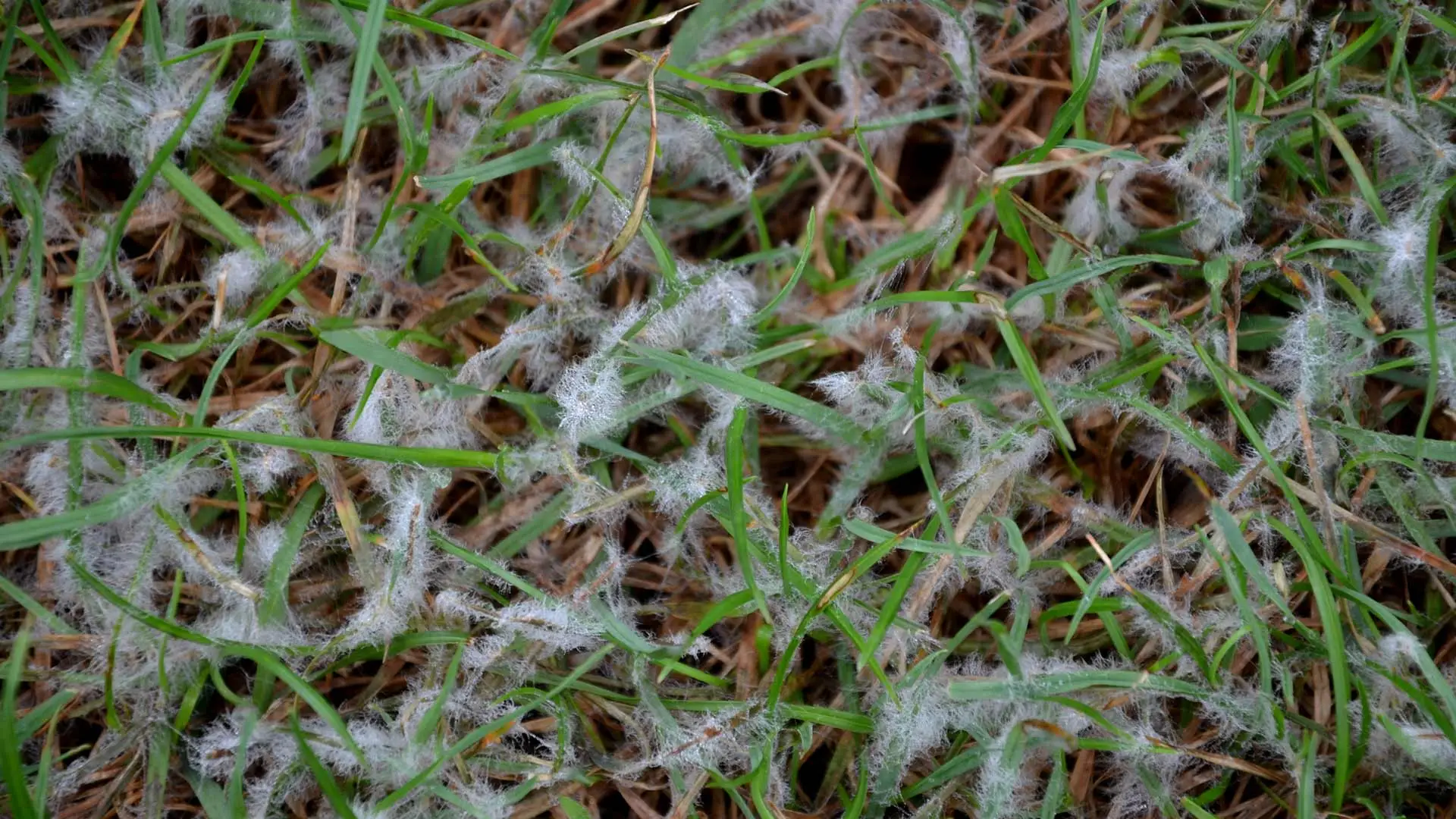With so many lawn diseases out there, it's easy for your lawn to fall victim to one of them. During the winter when your lawn is dormant and under stress due to the freezing temperatures, your turf is at risk of developing snow mold. This lawn disease is caused by fungi that remain in your lawn throughout the year and get activated by the decreasing temperatures. Once the fungi spread, you end up with a patchy turf that has a pink or gray coating.
Through leaf removal, mowing, and aeration, snow mold is preventable. Keeping your grass healthy with fertilizer treatments will also allow it to survive stress, be it from the frigid winter or lawn diseases. Learn more about snow mold and how you can prevent it this winter.
What is snow mold?
When the snow starts to melt, and you notice patches on your lawn that look matted with a pink or gray coating, it is likely snow mold. This lawn disease is caused by two types of fungi called Typhula blight or gray snow mold and Fusarium patch or pink snow mold. These fungi reside in your lawn throughout the year and start to spread once the temperatures drop to 45 degrees Fahrenheit and your soil gets drenched in melting snow.
Once the fungus is activated, the signs of this lawn disease will only appear when it's already too late. This is because your grass will be covered in snow when snow mold is actively spreading, and you end up with a patchy lawn in the spring.
The fungus that causes pink snow mold is more serious. It can survive temperatures up to 60 degrees Fahrenheit as long as the ground is damp and moist. Lawns affected by gray snow mold can usually quickly recuperate, but those damaged by pink snow mold take longer to recover.
How can you prevent snow mold from affecting your turf?
As with most lawn diseases, prevention remains the best option. While the patches caused by snow mold go away as the weather warms up, your lawn shouldn't have to go through that in the first place. Moist environments are excellent breeding grounds for snow mold. Here are effective ways to prevent snow mold from affecting your turf:
- Remove leaves that have gathered in the fall since they trap moisture and create ideal environments for snow mold to develop.
- Mow before the winter to encourage better airflow and help lessen moisture that can be trapped in the grass.
- Aerate your lawn in the fall to reduce thatch and prevent your grass from matting in the winter.
We recommend getting a professional team to perform these services to ensure your turf is getting the attention it needs.
In case of severe damage from snow mold, overseeding the affected areas will help promote new and healthy growth.
A strong grass can resist lawn diseases such as snow mold.
A healthy and strong lawn has the best chance of fighting off lawn diseases such as snow mold. Giving your lawn essential nutrients through fertilizer treatments will give the grass the boost it needs to remain lush and robust even when faced with stress from snow mold. Additionally, strengthening your lawn in the fall before the stressful winter season arrives will also allow your turf to survive the freezing temperatures and position it to rebound in the spring. Trying to fertilize your lawn by yourself can cause more harm than good, which is why we encourage signing up for a fertilization program so you can rest assured your lawn is being taken care of by lawn care professionals.
Call our lawn care pros today to schedule our lawn disease control services!
At Ohio Green Lawn & Pest, we provide high-quality services to promote healthy and lush lawns. With our skills and expertise, you can rely on our team to treat your lawn for diseases such as snow mold, brown patch, dollar spot, and others. Our team also provides fertilization treatments to strengthen your lawn and allow it to resist diseases trying to destroy it. If you own a commercial or residential property in Mansfield, Ashland, Wooster, OH or a nearby area, our services are available for you. Call our lawn care pros today at (419) 528-5698 to schedule our lawn disease control services!



Comments (0)
Thanks for your comment!
Thanks for your feedback! Your comments have been successfully submitted! Please note, all comments require admin approval prior to display.
Error submitting comment!
There is a problem with your comment, please see below and try again.